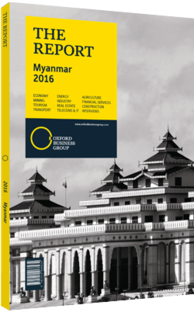Liew Mun Leong, Chairman, Surbana Jurong and Changi Airport Group: Interview

Interview: Liew Mun Leong
How has urban infrastructure developed, especially in transport, since the economy opened?
LIEW MUN LEONG: Since the introduction of broad-based economic reforms in 2012, Myanmar has been steadily urbanising year-on-year at a rate of 2.5%. However, infrastructure development remains challenging, with the World Economic Forum ranking Myanmar 141st out of 148 countries in quality of infrastructure in 2014. The Asian Development Bank has also estimated that the shortfall in infrastructure investments in Myanmar is at least $240m.
Recently, the Myanmar government’s attention has been focused on improving the country’s existing highways, roads and railways, as well as building new bridges, elevated highways and ring roads. This is a move in the right direction and can be further enhanced with an overarching transport planning framework, which should be implemented in tandem with larger urban development guidelines.
History has shown that proper urban planning and consistent infrastructure development are key success factors for any emerging country. To ensure sustainable development in the long term, Myanmar will require strong agencies to champion integrated urban and transport policies.
In what ways will the establishment of Hanthawaddy Airport enhance Myanmar’s growth?
LIEW: The aviation industry plays a critical role in facilitating trade and business, and contributes significantly towards global economic prosperity. Today, more than 58m people are employed worldwide in aviation-related industries; contributing $2.4trn to the global economy, the equivalent of 3.4% of the world’s GDP. In 2014 the world’s air passenger traffic also crossed the 3bn mark, nearly half of the world’s entire population. Aviation facilitates connectivity on a global scale; not only by bringing people to the markets, but also by bringing the markets to the people.
Similarly, the establishment of Hanthawaddy airport will further stimulate Myanmar’s economic growth and development. As a greenfield international airport with a capacity to handle 12m passengers a year, Hanthawaddy will radically boost passenger and cargo operations and open a new gateway to the country. Hanthawaddy’s development will also be a catalyst for other supporting industries, and will encourage more foreign investment to support Myanmar’s larger economy.
In terms of urban planning, what does Myanmar need to prioritise, and how can traffic congestion be alleviated in Yangon city?
LIEW: Successful urban planning is about creating a “liveable” environment. To ease traffic congestion, there are a few core areas Myanmar needs to address; namely housing, infrastructure and the creation of new city centres.
As Yangon’s economy grows, more people will be drawn from rural to urban areas. Proper housing and distribution of the growing population will ensure that the population base is evenly spread across the city and not concentrated in a few localised areas that would worsen congestion.
An efficient public transportation network (light rail, bus or tram) will also need to be established to cater to the large populations commuting within Yangon. This relieves pressure on private transportation options, which can overload existing infrastructure, and creates accessibility and equity, which are important components of a “liveable city”.
Secondary business, commercial and/or industrial centres could also be established along the peripheries of Yangon city, so that the city centre can be expanded further. The creation of such regional sub-centres will allow the central core to take on much more focused functions, and facilitate the redistribution of traffic away from the central area.
You have reached the limit of premium articles you can view for free.
Choose from the options below to purchase print or digital editions of our Reports. You can also purchase a website subscription giving you unlimited access to all of our Reports online for 12 months.
If you have already purchased this Report or have a website subscription, please login to continue.

